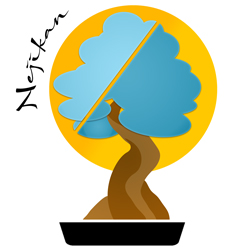Nejikan Style: The Twisted Trunk Bonsai
Definition and Origins

The Nejikan style, also known as the "twisted trunk style," is characterized by a trunk that naturally twists and turns, either naturally or through training. This style captures the aspect of trees that have twisted and coiled around themselves over time, often in response to environmental conditions like prevailing winds.
Distinctive Characteristics
- Twisted Trunk: The most striking feature of the Nejikan style is its distinctively twisted trunk, creating a unique and dynamic visual aspect.
- Natural and Graceful Movement: The trunk of the Nejikan bonsai coils in a natural and elegant manner, evoking a sense of movement and fluidity.
- Balanced Branching: Branches emanate from the twisted trunk, often asymmetrically, to complement and balance the twisted form of the trunk.
- Adaptive Foliage: The foliage is carefully maintained to complement and enhance the twisted shape of the trunk, without overburdening the tree.
- Pot and Presentation: The pot chosen for the Nejikan style is generally simple and understated, so as not to distract from the impressive appearance of the trunk.
Species Selection
Flexible and malleable species are most suitable for the Nejikan style. Junipers, certain types of pines, and maples are often used to create this captivating style.
Maintenance and Cultivation Techniques
- Pruning and Pinching: These techniques are essential to maintain the visual balance of the tree, particularly pruning to control growth and foliage density.
- Wiring: Wiring may be necessary to encourage or maintain the twist of the trunk and to direct the branches.
- Repotting and Substrate: Regular repotting with a well-draining substrate is important, taking care not to disturb the unique structure of the trunk.
Conclusion
The Nejikan style is a remarkable artistic expression in the world of bonsai, illustrating the beauty and intrigue of natural twisted forms. These trees offer a captivating perspective on strength and flexibility, telling a story of survival and adaptation through their spiral trunk.

















